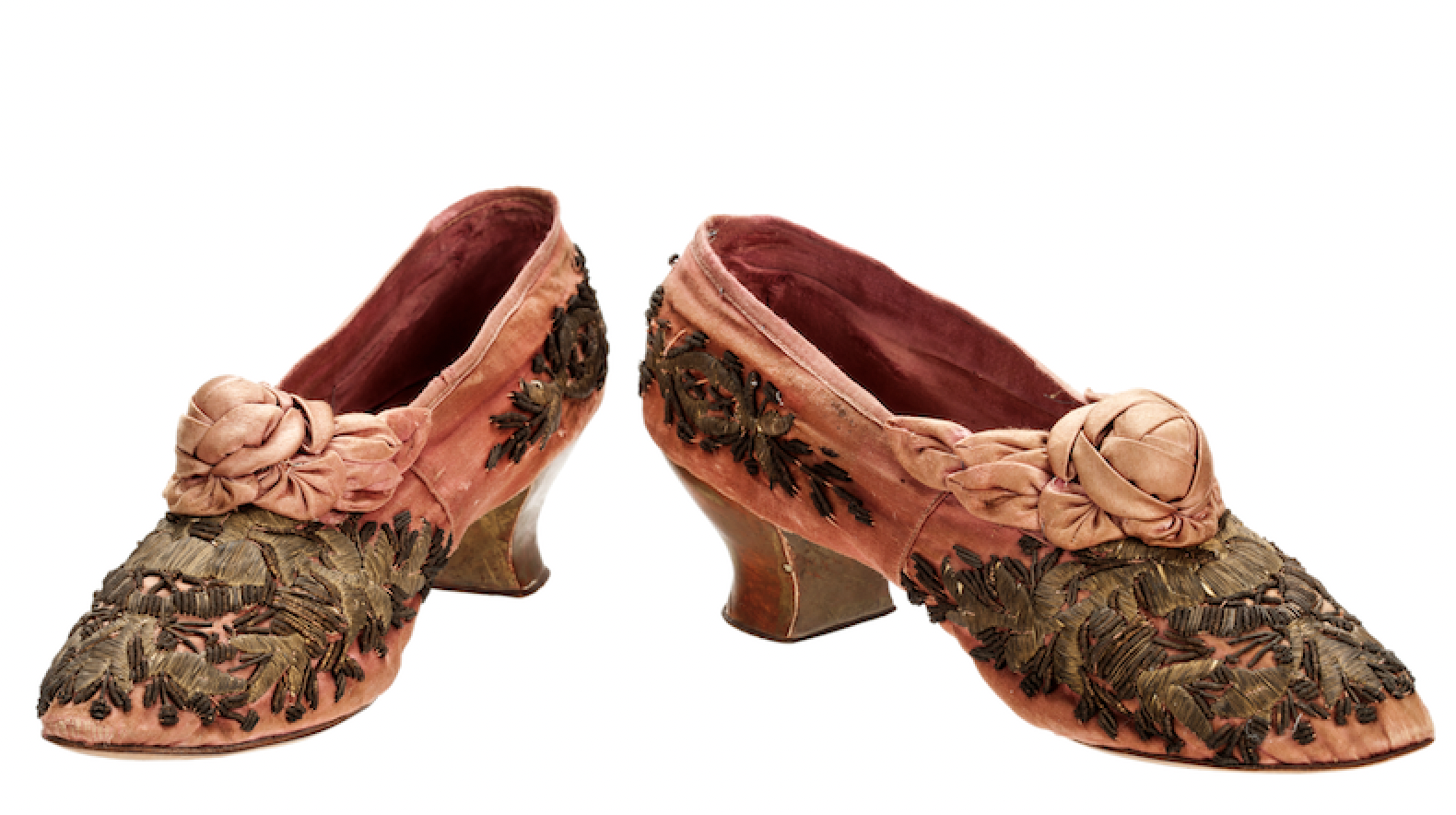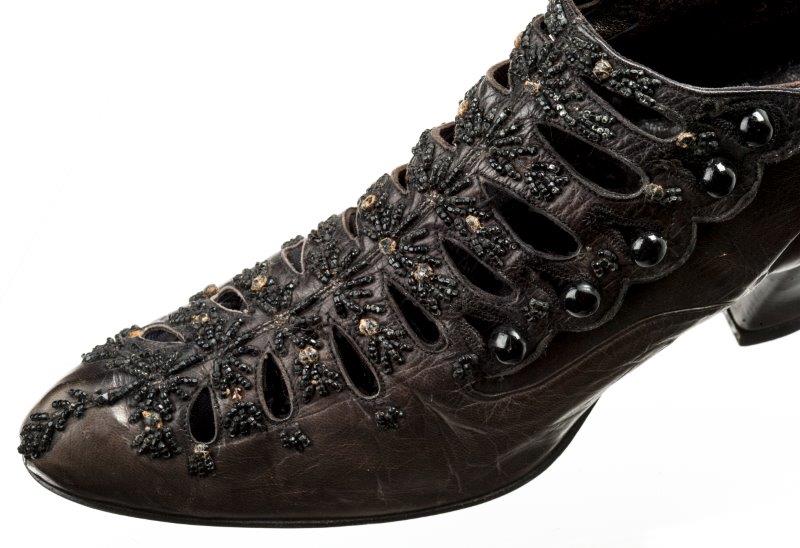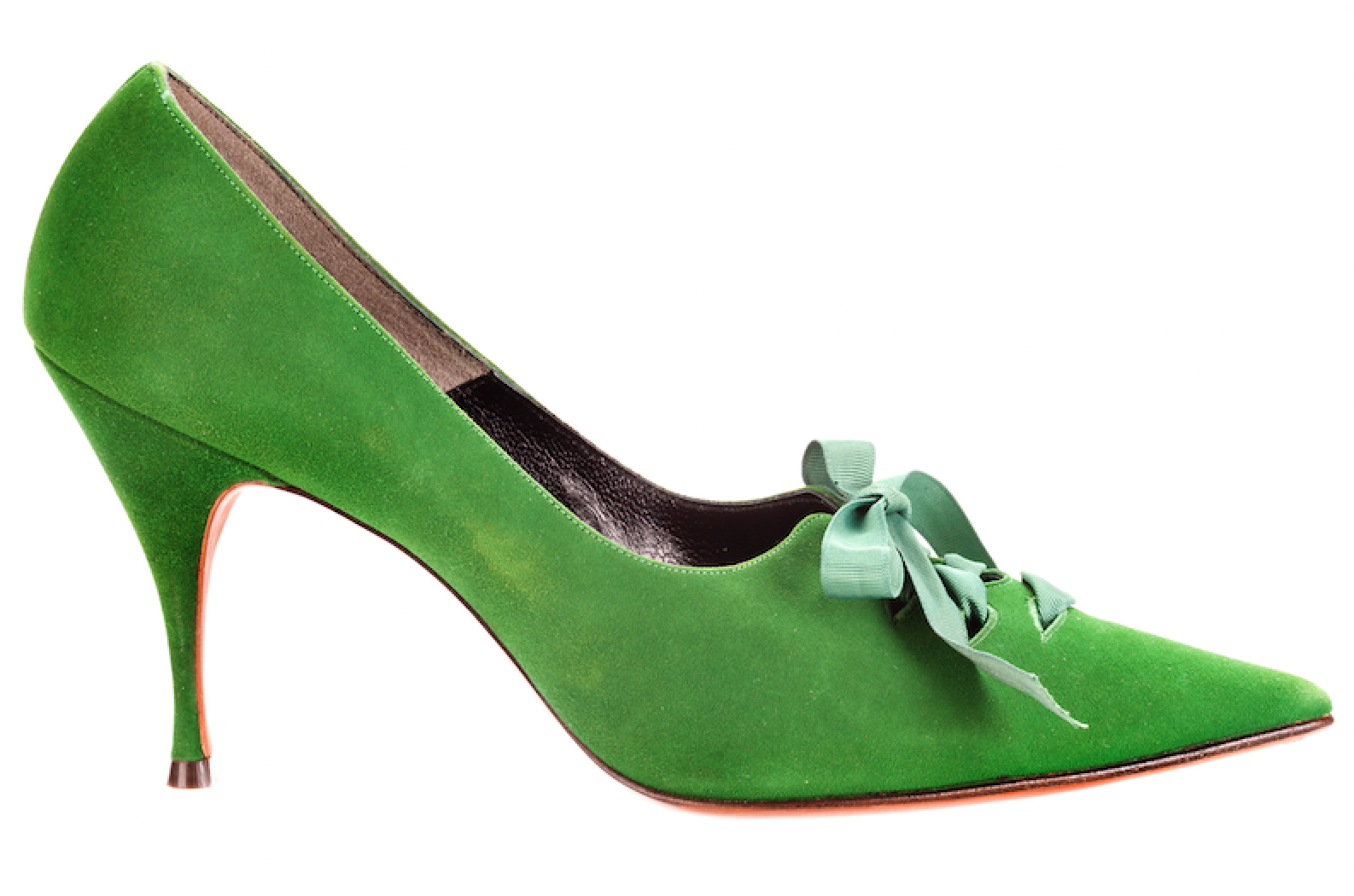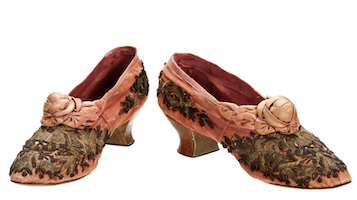
DOYLESTOWN, Penn. – The James A. Michener Art Museum presents Walk This Way: Footwear from the Stuart Weitzman Collection of Historic Shoes, on view September 24 through January 15, 2023. Focused on the women who designed, manufactured, sold and collected footwear, the exhibition explores how shoes have transcended their utilitarian purpose to become representations of culture — coveted as objects of desire, designed with artistic consideration, and expressing complicated meanings of femininity, power and aspiration. This exhibition has been organized by the New-York Historical Society.
Michener’s Chief Curator Laura Turner Igoe said: “Walk This Way provides a unique look at the history of fashion, labor and gender through a wide range of footwear. It’s very exciting to share this impressive collection of shoes with visitors.”
Walk This Way presents more than 100 pairs of shoes from the extensive private collection assembled by the iconic designer Stuart Weitzman and businesswoman and philanthropist Jane Gershon Weitzman. The exhibition covers a century of economic change, from the spread of industrialization to the development of consumer culture to the impact of globalization, with a focus on women’s contributions as producers, consumers, designers and entrepreneurs. Shoes are presented as pathways toward discovering the vital role of women as well as diverse historical narratives around women’s labor activism, the fight for suffrage and the sexual revolution.

This exhibition explores a variety of shoes, including those worn by suffragists as they marched through the streets, Jazz Age flappers as they danced the Charleston, and starlets who graced the silver screen in the postwar era. Walk This Way features the footwear designs of Christian Dior, Yves Saint Laurent, Salvatore Ferragamo and Beth Levine — dubbed the “First Lady of Shoe Design”— as well as shoes by Stuart Weitzman himself.
Examples in the show include the pair of boudoir shoes pictured above, which were made expressly for the Paris Universal Exposition of 1867; the soles are stamped with the exhibition seal. During the age of European imperial expansion, Western consumers clamored for so-called “exotic” textiles, such as the Turkish gilt-thread embroidery seen on these shoes.
Also of note is a circa-1915 buttoned leather shoe, with a small stamp on the sole bearing the mark of the International Boot & Shoe Workers Union, established in 1895. By 1904, its constitution called for “uniform wages for the same class of work, regardless of sex,” and by 1908, Mary Anderson of Chicago had been elected to the union’s general executive board. Anderson later served as the first head of the Women’s Bureau in the U.S. Department of Labor.

One of the display items designed by Weitzman’s father, Seymour, is a circa-1964 pointed-toe suede green lace-up pump. The shoes were manufactured in Haverhill, Massachusetts, at a factory owned by Seymour Weitzman. Massachusetts was the earliest center of large-scale shoe production in the United States.
In addition to the exhibition itself, the Michener will display a selection of innovative shoes by contemporary Delaware Valley designers that express empowerment, an important theme that runs throughout the Walk This Way exhibition.
Visit the website of the James A. Michener Art Museum and see its dedicated page for Walk This Way: Footwear from the Stuart Weitzman Collection of Historical Shoes.


